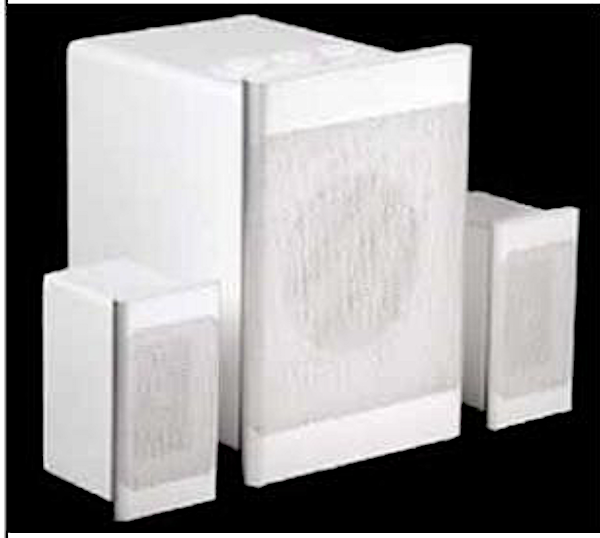Analog Corner #120

Car stereo as high-performance audio goodwill ambassador got another boost recently, when Audi announced a partnership with Bang and Olufsen to develop a new, high-performance sound system for Audi’s luxury A8 model. The Lexus–Mark Levinson trip I took recently and wrote about in the May “Analog Corner” paid another kind of dividend: a writeup in Motor Trend that included a sidebar about the sound, quoting my assessment of the Levinson system and mentioning Stereophile.
Unfortunately, as with home audio, which is becoming more in-wall every day, most car speaker systems are designed to be hidden in the doors and package shelf. Not so the B&O system, which I saw and heard (in an unfinished state) during a tip to Denmark last winter.
My impression of B&O was probably similar to yours: a company more interested in good interior design than in good sound. That made Audi’s choice of B&O curious, given that car stereos are meant to be heard and not seen. But walking the aisles of B&O’s museum in Struer, Denmark reminded me that the company has a history of producing good-sounding gear that happens to look very cool—and that includes turntables and phono cartridges. Besides, Audi already had a relationship with B&O, which builds the brake calipers used in the A8 (as well as in Lamborghinis), and its world-class aluminum fabrication facility produces parts for BMW and other car companies.
Stereophile hasn’t reviewed it, but B&O got back into high-performance audio last year with its BeoLab 5, a powered, DSP-driven, three-way loudspeaker fitted with a unique acoustic lens system licensed from Sausalito Works, an American firm. The midrange and tweeters (which are conventional Vifa-sourced domes) fire upward into the lens, which effectively disperses focused sound across a wider-than-usual—though not omnidirectional—radiating pattern (footnote 1).
What’s significant and unusual about the Audi-B&O system is that it’s meant to be heard and seen. When you turn it on, two acoustic lens assemblies, each containing a 19mm tweeter, dramatically pop up at the ends of the dashboard to help produce a proper soundstage right where it belongs: in front of the listener. In addition, the gleaming, jewel-like, door-mounted driver housings are made of heavy aluminum stock in a time-consuming, mind-bogglingly complex machining process I got to watch.
When I questioned Audi’s Peter Blum about the wisdom of putting such a visible sound system in a car when the trend seems to be in the opposite direction, he said (I paraphrase): “This is an optional, extra-cost system, and enthusiasts who order it will want to both hear it and see it.” Right on! In Germany, I have no doubts that they’re serious about audio. In America? We’ll see.
Audi’s B&O Advanced Sound System, the voicing and development of which are under the direction of Geoff Martin, a young, enthusiastic Canadian Tonmeister trained at McGill University, will include 14 active loudspeakers, the acoustic lens systems, more than 1000W of “Icepower” (digital class-D) amplification, and active digital signal processing (DSP). What I heard in an Audi A8 was not quite finished but sounded promising. I’m hoping I’ll get another listen when the car is introduced in America in spring 2007. Meanwhile, the more attention carmakers pay to sound, the better it is for high-performance audio’s prospects in the home.
Another computer speaker worth mentioning:

Not even a cover story in the March 2001 Stereophile (Vol.24 No.3) was sufficient for Acoustic Energy’s AEGO2 PC speaker system catch fire with consumers. Maybe the problem was that not enough audiophiles are interested in good computer sound, and for computer geeks, $599 for a powered satellite-subwoofer system is “expensive.” Whatever, the AEGO2 was a great product. I bought one and use it every day while working at my Apple G5 desktop computer.
DV Forge’s ProSticks is another attempt to rope computer enthusiasts into good sound. The company sent me the $369 sat-sub system to play with, and I can tell you that it’s another great little system that I hope becomes popular with audiophiles—and nonaudiophiles, who may be tempted to take a greater interest in sound after living with them for a while.
The main attraction is the system’s reasonably deep and superbly tight and tuneful bass, thanks its 7" sealed-box subwoofer. The ProSticks’ bass performance surpasses the AEGO2’s, which was somewhat “thumpy,” but the tradeoff with a sealed box is a loss of efficiency. DV Forge doesn’t supply specs for amplifier power, but the ProSticks doesn’t play as loudly as the AEGO2. However, even when pushed to the max, it delivers more than enough SPLs for undistorted nearfield listening.
The ProSticks’ high-frequency drivers aren’t specified, and it’s difficult to see behind the speaker’s perforated metal grille, but its top end is reasonably smooth, airy, extended, and free from annoying edge and etch. I prefer the AEGO2’s expansive soundstage, but the ProSticks has somewhat better focus and transparency. I like the individual left/right and subwoofer level controls. They help in achieving an ideal sat/sub balance, though getting a good blend takes time, patience, and lots of experimentation in subwoofer placement.
All in all, the DV Forge ProSticks is an easy recommendation for computer listening and, I hope, another goodwill ambassador for high-performance audio. It can be ordered from their website, www.dvforge.com/prosticks.shtml, and comes with a full, money-back guarantee. (If you’re using the latest iteration of Apple iTunes, be sure to go to the Preferences menu’s audio window and de-select the audio “Enhancement” default setting. It’s a teeth-rattling brightness boost inserted in the program by a sonic imbecile at Apple.)






















































